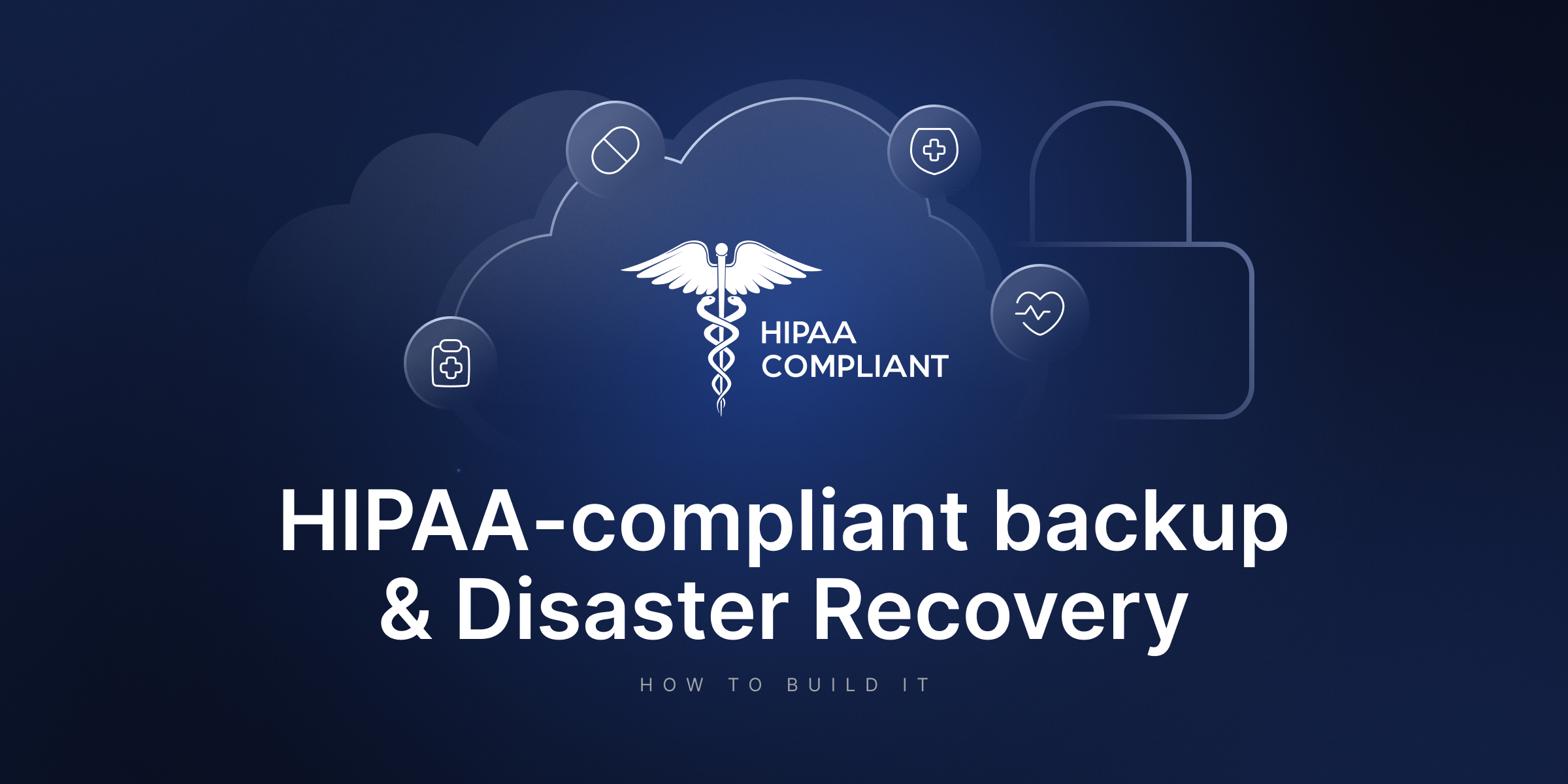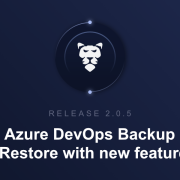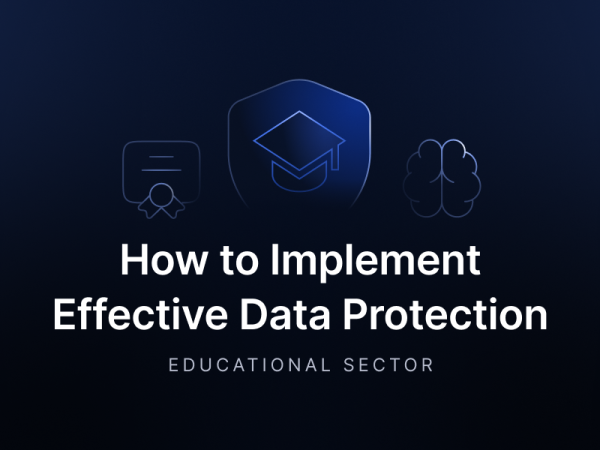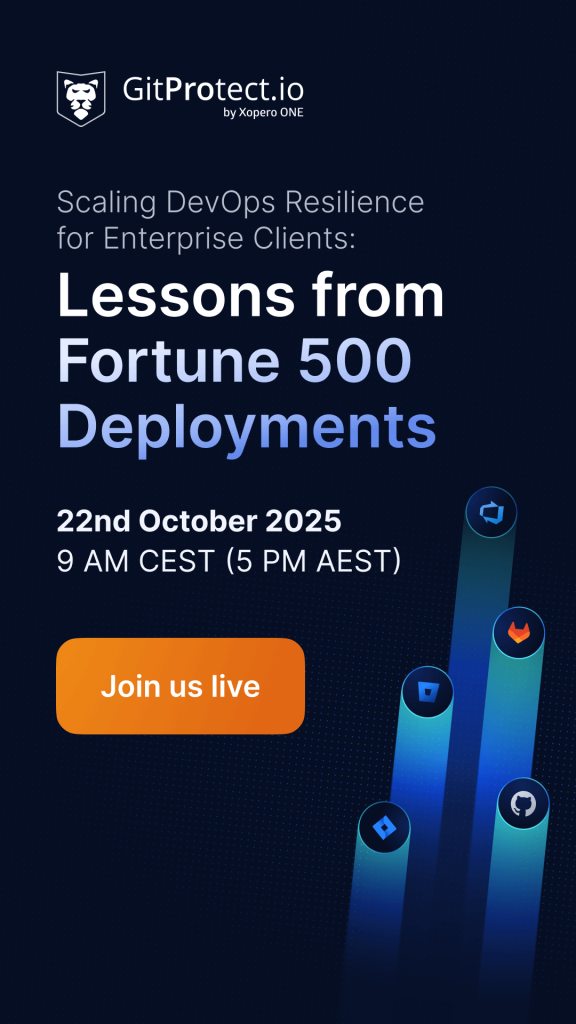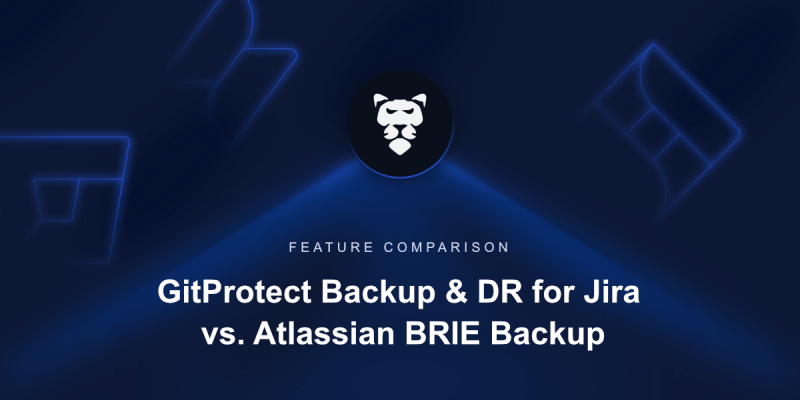
GitProtect vs. Atlassian Backup: Comparison included
Atlassian’s recently released Backup and Restore feature – currently in Open Beta – signals a positive direction in SaaS data protection. However, for companies operating in regulated environments or simply needing disaster readiness beyond a marketing slogan, it has limitations that should be carefully considered. Let’s break down this feature step by step.…
Q: What is Atlassian Backup and Restore Experience in open beta?
Atlassian released its built-in backup capabilities for Jira, Confluence, and Jira Service Management to empower customers with an effective response to customer-owned disasters, like accidental deletions. Moreover, with its BRIE backups, Atlassian aims to help organizations to meet their internal and regulatory requirements.
The feature allows Enterprise customers to define backup policies, including specifying what data to back up, the frequency of backups, and choosing where to store their data.
So, with Atlassian BRIE backups, you get:
- daily backups, which means a 24-hour RPO,
- 12-hour RTO, as you can restore your data from a backup in less than 12 hours,
- the possibility to store your data in Atlassian Storage or store your data in AWS S3,
- the proof of your backups via Audit logs.
Q: Why is this Atlassian backup and restore capabilities release important?
On the surface, Atlassian’s backup initiative signals recognition of a longstanding gap in SaaS data protection and resilience. The threat is very real. Data loss — two of the most feared words in modern business — can quickly turn from myth to costly reality.
The average cost of downtime reaches $9,000 per minute, and for larger organizations or those in heavily regulated industries, the price can be far higher. The true cost depends on scale, industry, and compliance obligations — but in every case, the impact is severe.
Outages, human errors, and ransomware attacks all have one thing in common — they can result in data loss. This is why data protection and backup aren’t optional checkboxes but essential safeguards. According to the CISO’s Guide to DevOps Threats, Atlassian’s Jira services, including Jira Software, Jira Service Management, and Jira Work Management, suffered over 130 incidents in 2024, with 10 classified as major, causing roughly 17 hours of disruption. And let’s not forget one of the most notorious Jira outages in 2022, when a faulty script combined with internal miscommunication left more than 700 organizations unable to access their Jira data for weeks.
So, does SaaS data need protection? Does SaaS data need backup? The answer is obvious…
Gartner predicts that by 2028, 75% of enterprises will prioritize backing up their SaaS applications. In other words, building a reliable backup strategy isn’t a short sprint — it’s a long-term marathon.
Here, we shouldn’t forget about the Atlassian Cloud Shared Responsibility Model, which clarifies the duties of both Atlassian and its customers. Atlassian’s duty is to guarantee its service availability and accessibility, and its customers’ obligation is to ensure their customer-owned data protection. So, what does Atlassian say about it while presenting its new Backup and Restore Experience? Let’s go to the source:
“Our main goal is to empower you to effectively respond to customer-owned disasters and further assist you in meeting your compliance requirements, helping ensure seamless business continuity. Atlassian will continue to implement the necessary strategies to address Atlassian-owned disasters as part of our shared responsibility model.”
Thus, let’s sum up: Atlassian-owned disasters are the responsibility of the service provider, and your account data disasters lie on your shoulders to deal with.
Atlassian’s open beta adds an additional safety net but doesn’t fundamentally change customers’ responsibility for account-level data resilience.
Q: Are there any limitations to Atlassian’s backup and recovery capabilities?
Atlassian states that you can store your data in the Atlassian Storage for up to 14 days, and if you go with your own AWS S3 Storage, you can keep your data for as long as you need… But… your restore capability is limited to 30 days. In other words, your retention is limited to 14 or 30 days, which is far too short for enterprise or compliance needs.
And if you keep your backups with the Atlassian ecosystem and it suddenly goes down, what will happen to your backup copies? Well, if a given region is inoperable, your backup might go down as well.
Another critical limitation is the inability to meet the golden backup standard — the 3-2-1 rule: at least 3 copies, stored across 2 different storage instances, with 1 kept offsite. In Atlassian’s case, backups reside in the same environment as production data, violating this fundamental principle of resilient backup strategy.
The so-called on-demand backup isn’t truly on-demand — Atlassian defines a time window for execution and restricts you to just two backup policies per application, whether weekly, daily, or ‘on-demand.’
Coverage is also limited. Metadata support is incomplete, Automation Rules aren’t backed up, and Jira backups exclude attachments — storing only references or links to files in the Atlassian bucket. But what if a region goes down?
Perfect timing to address restore capabilities. With Atlassian’s new BRIE backups, restores are restricted to a new, clean instance — and only within the same region and shard. You cannot restore to the same instance unless it’s fully wiped. Even then, the restore process is all-or-nothing, with no option for granular recovery of specific projects or work items.
Thus, organizations might find it difficult to address the most common risks and disaster scenarios:
- If your Jira project is deleted, you will need to restore the entire Jira instance to a new site.
- If your backups live alongside production data, ransomware or platform outages could take both down.
- If you need to pass a compliance audit, a 14-day or 30-day retention might not be enough.
Q: Can Atlassian Backup and Restore Experience help with compliance?
According to PwC, 85% of organizations report that compliance requirements have become more complex in recent years. It means that more stringent requirements are presented regarding retention periods, resilience, audit trails, availability and accessibility, as well as incident response planning.
Any proof?
Retention
“Maintain the policies and procedures provided for in subsection (9) above in written or electronic form…. Retain the documentation required by this paragraph for six years from the date of its creation or the date when it was last in effect, whichever is later.”
Availability and accessibility
“The measures referred to in paragraph 1 shall be based on an all-hazards approach that aims to protect network and information systems and the physical environment of those systems from incidents, and shall include at least the following: … (c) business continuity, such as backup management and disaster recovery, and crisis management…”
And it’s only the tip of the iceberg…
Thus, due to some of the limitations, highly-regulated and compliance-driven industries might need a longer retention period than Atlassian’s BRIE backup capabilities allow. Moreover, they might require having a few backup copies of their data to meet the 3-2-1 backup rule and having at least 3 copies in no less than 2 different storage instances, one of which is off-site.
Q: What should I look for while building my backup strategy?
There are two kinds of people — those who have backups, and those who will. While building your backup strategy for an enterprise, make sure that you have:
- full data coverage, including Assets, Jira Automation Rules, projects, work items, and their metadata,
- long-term, or even unlimited retention to keep your data not only for weeks or months, but for years,
- multi-storage compatibility and replication, so that you keep your critical data separate from the SaaS provider,
- immutability of your backups, so that attackers can’t compromise both your live data and backup one,
- granular restore of only selected data, like projects, or work items,
- every scenario-ready Disaster Recovery, so that you can access your data in any event of failure.
- many data restore destinations – whether it’s a local device or both the same or new Jira account.
- all-in-one platform for all DevOps data protection – to manage all your DevOps data protection in once central management console, including data from tools as Bitbucket, GitHub, GitLab, Azure DevOps, and more.
Q: What’s the takeaway for IT leaders and Jira Admins?
Atlassian’s shared responsibility model is clear. Backup and data protection for user-generated content is on you. The new Atlassian’s native tool may cover daily backups, but it doesn’t cover full context or even long-term recovery scenarios.
Crucially, Atlassian’s open beta solution provides:
- no support for project migration
- no anti-ransomware logic
- no extended retention
- no clear compliance guarantees.
On the other hand, organizations still have the possibility to adopt third-party backup tools, like GitProtect backup and Disaster Recovery software for Jira, which offers a more comprehensive approach to building a defensive strategy. Immutable backups, end-to-end encryption, multi-tenant support, zero-knowledge vaulting, and the ability to restore everything turn the tool into a true continuity layer for your Jira environment.
In critical systems, metadata is essential. Without it, backup is incomplete. Atlassian’s BRIE backup adds value but should be viewed as a first step rather than a full enterprise-grade solution.
Core differences at a glance
| Feature/Capability | GitProtect | Atlassian Backup (Beta) |
Core Jira Data | ✅ Full scope: projects, workflows, users, comments, boards, attachments, roles, etc. | ✅ Core Jira data, users, configs, comments, attachments (referenced) – details vary per product |
| Assets (JSM) | ✅ Assets fully backed up and restorable with original object IDs (in Assets restore) | ✅ Assets supported, available to customers in the Early Access (Beta) program |
| Deployment flexibility | ✅ Marketplace app or full on-premise version | ✅ Auto-enrolled for enterprise organizations, cloud-only |
| Backup automation | ✅ Automated, policy-based (few times a day, even) On-demand backup, Multiple schedules Custom backup rotation schemes (inc. GFS) | 🚫 Daily only, no custom schedules |
| RTO / RPO | ✅ Test Restore and POC to measure and meet your expected RTO and RPO | 🚫 RPO = 24h, RTO = 12h, subject to strict data size guardrails |
| Retention | ✅ Unlimited – compliant (compliance-friendly) Custom retention and settings of backup rotation schemes Meet Shared Responsibility Model and compliance needs (SOC 2, HIPAA, SOX) | 🚫 14 days (Atlassian), 30 days (S3); no restore after retention |
| Storage options | ✅ Free unlimited cloud storage included in every plan BYOS – Any S3 compatible cloud -AWS S3, Wasabi, Azure Blob Storage, Backblaze, On-premise storage support | 🚫 Bring Your Own Storage (BYOS, S3) or rely on a 14-day internal retention |
| Authentication and SSO | ✅ SAML, SSO (Google, Microsoft, GitHub), token-based login | ✅ Basic SSO; no token or SAML |
| Migration / Data portability | ✅ Full migration between projects, sites, configs, and accounts | 🚫 Not supported; relies on third-party scripts or apps |
| Security and compliance | ✅ SOC 2 Type II compliance ISO/IEC 27001:2022 certified AES-256 encryption (at rest / in flight), user-owned encryption key, Role-Based Access Control (RBAC) and advanced permissions settings Data residency of choice (US, EU, AUS, Custom) Advanced audit logs for activity tracking | ⚠️ Partial compliance (FedRAMP); ISO/SOC2 missing; Early Access warning by Atlassian itself |
| Ransomware protection | ✅ Immutable WORM storage, Air-gapped backups Non-executable data in copy Limited access to storage credentials | 🚫 Not available |
| Password vault / Zero-knowledge | ✅ Zero-knowledge encryption, SAML/SSO, Password Vault | 🚫 No password-level protection or vaults |
| Data Restore & Disaster Recovery | ✅ Granular Restore (of any object, project, file, or rule independently) Disaster Recovery (full org restore) Many restore targets Any-time restore (no restrictions) Test Restore (with no-user restore option) Cross-instance restore (production -> sandbox) | 🚫 No granular restore; only full instance-level recovery One restore every 7 days |
| Restore targets | ✅ Restore into any existing or clean Jira instance (granular or full) Data migration between Jira Orgs No user recovery option (for both test restore or to avoid double costs) Restore to a local device (in case of Jira outages) | 🚫 Restore is allowed only into a clean Jira instance with no projects present |
| Attachment/data completeness | ✅ Attachment and metadata included in backup – fully restorable outside Atlassian infrastructure | 🚫 Attachments are not part of the backup (kept via S3 retention references). If Atlassian infrastructure/region fails, recovery is incomplete even with BYO S3 |
| Automation rules backup | ✅ Backed up and restorable, including global and project-specific | 🚫 Not backed up |
| Region/shard restore limitation | ✅ Restore to the same/different region, shard, or instance | 🚫 Restore is limited to the same region or shard; prone to shard mismatch errors |
| Custom start day for backups | ✅ Customizable schedules, including start day | 🚫 The backup schedule start day cannot be changed |
| On-demand backup availability | ✅ Truly on-demand; executes immediately or via policy | 🚫 ‘On-demand is not real-time; it executes within the Atlassian-scheduled window |
| Metadata coverage | ✅ Rich metadata backup; fully restorable | 🚫 Poor metadata coverage; some config data missing or non-restorable |
Tier / Plan requirements | ✅ Available to all Atlassian organizations and plans | 🚫 Enterprise Tier Only |
[FREE TRIAL] Ensure compliant DevOps backup and recovery of critical Jira data with a 14-day trial 🚀
[CUSTOM DEMO] Let’s talk about how backup & DR software for Jira can help you mitigate the risks



